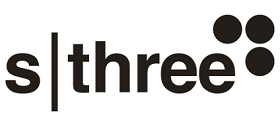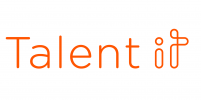Hoe kan AI de STEM skills gap dichten?
Kunstmatige intelligentie zal geen banen schrappen, maar zal ze juist creëren door de skills die echt menselijk zijn te benadrukken. Dat zegt Timo Lehne, CEO van SThree in deze (Engelstalige) blog. Bovendien zal het snel een cruciale vaardigheid worden: “De behoefte aan AI-kennis zal de kern vormen van de volgende golf van het tekort aan bèta/technische vaardigheden.”
Elon Musk believes artificial intelligence will create a world without work, and therefore without meaning and purpose in our day. Call me crazy, but I don’t agree. In fact, paradoxically, as AI becomes increasingly powerful, there will be a parallel increase in demand for skills that are considered uniquely human.
We’ve heard about a future without work before. It’s an idea that recurs with each new revolutionary technology, from the age of machines around the turn of the 20th century, through to computing, to the age of cyberspace. But it’s an idea that never seems to turn into a reality.
This phenomenon can be explained with Gartner’s technology hype cycle. The hype cycle is based off Roy Amara’s law which suggests that society overestimates the effect of new technology in the short run but underestimates its effect in the long run.
All of us, at some point within our lifetime, have heard of or felt threatened by new technology and how it will change society as we know it. But once those early, inflated expectations wear off, the dust settles on a slightly more realistic iteration of the working world. Think: electricity, dotcom, autonomous vehicles and now, yes, you guessed it, AI. 2023 was the year that AI hit the peak of inflated expectations.
It’s a tale as old as time. While technological innovations have changed how we work and what we do, we’ve managed to stay one step ahead by redefining why we work. AI is no exception.
Artificial intelligence isn’t the same as human intelligence
AI is not a development to be feared or overhyped. It won’t take away all, or even most, jobs like some might say because it cannot replicate two forms of human intelligence – interpersonal and intrapersonal. Together, these intelligence types make up emotional intelligence (EQ).
AI struggles to automate EQ traits such as emotion, feeling, intuition and empathy. Without EQ, technology can’t replace humans in tasks that require perception and manipulation of cluttered or noisy physical or digital environments, and creative or social intelligence.
Yes, the moment will eventually arrive where AI can mimic these unique forms of human intelligence, but at that point we would have finally fully understood every inch and synaptic connection of the human brain and what it is to be conscious. So, it’s safe to say AI is a friend, not foe. Indeed, it is already being built into existing workflow tools, making us more productive by performing repetitive, time-consuming tasks. And by making organisations more productive, AI can be a driver of growth.
But while AI can teach itself new skills, its work still needs checking – whether it’s drafting a letter to a customer, writing a section of code for a website or generating the first filter for medical diagnosis. If harnessed effectively, it can help ease skills shortages. It won’t be long before we consider it as another colleague, rather than just a tool. Gartner is calling these machines synthetic virtual colleagues and predicts there will be 100m of them by 2026.
Rather than threatening our jobs, these new “synthetic” colleagues will help fill skills gaps by both fulfilling roles and freeing up staff to concentrate on work requiring uniquely human talents – building relationships and engaging with others around us.
When we consider AI assistants, we think about them generating something. But thinking beyond generative AI into other areas that are more adept at crunching numbers, recognising patterns or investigating correlations and causes, can help businesses make better staffing, allocation and development decisions.
Using AI to understand skills requirements
A big concern with AI is around bias, and perpetuating biases in the data given to it. AI is currently limited in this way as it will try to please the user rather than challenge statements, whether true or false. If the data AI is fed is biased and goes unchallenged by the language model, the result will also be skewed. Outputs will worsen over time as these biases are reinforced through learning.
However, biases can be counteracted in organisations through training and education of staff when using AI. To do this, users must learn AI’s limitations and know how to correct them through constant retraining of the tech with new data.
If trained correctly, AI can be used positively, and eventually as an advantage over human intelligence. Only when trained against biases can AI exceed humans in the solutions or answers it proposes due to its use of data, ability to analyse things in unexpected ways and capabilities in finding patters and opportunities that are more difficult for humans to see. Within the workplace, AI can help employers better understand and predict their skills needs into the future and help identify ways to meet those.
Applying it to the enterprise human/AI resources conundrum may, in the future, lead to clever ways to optimise the skills mix. AI can, for example, find smarter ways to use the skills of existing staff, or to upskill or reskill those staff.
Employers are used to screening for more formal and obvious qualifications when reviewing CVs. Given the right scenario, AI can suggest how to fill roles by expanding the talent pool and considering candidates who are a good fit and have the right skills, but who don’t necessarily have traditional recognised qualifications.
If we take this one step further, AI will be able to help fill a nation’s skills gap by better matching educational courses with the future skills needed in an economy.
AI can boost retention
Back at enterprise level, AI can also help attract the right talent, particularly employees who are looking for more interesting, creative and fulfilling work. In fact, employers may find they must embrace AI to find the talent they require. Generation Z (born 1995-2007) is now pouring into the labour market. Gen Z can’t lay claim to be AI-native; that moniker may go to the wave behind them, Generation Alpha (born after 2010). But they are certainly open to new technologies – they are digital natives, Google natives and many are Meta natives.
Moreover, Gen Z are entering the world of work at the peak curiosity age, just as AI too is entering the workplace. And they’re the most curious generation ever, with higher ‘learnability’ levels. Gen Z are hungry for AI, seeing it as a useful collaborative tool and one that can offer job security. There’s every sign they are not wrong. Most companies are already looking for candidates with generative AI experience and prompt engineers are being snapped up.
As I’ve argued before, organisations that embrace AI in its early stages will enjoy a competitive advantage. But it will soon be a crucial skill, as the need for AI knowledge will be the at the heart of the next wave of the STEM skills shortage.
Organisations may have no choice but to offer their employees the chance to work with AI if they are to attract sufficient talent in the future. So not only does it have the potential to fill the skills gap by improving employee productivity and taking over work directly, but it will also be necessary into keeping and attracting the rare talent there is out there.
Where to start with AI
AI is exciting. It’s difficult to know where to start with it but the most important place for employers is within their current staff. Be mindful of how the workforce feels about the technology.
Our How the STEM World Evolves survey found 34% of professionals were worried about losing their jobs. Building trust with employees so they know they will not be left behind is key. This could be through demonstrating leaders’ enthusiasm for AI to their staff and emphasise the positives, like leaving humans with the more creative work to do.
Employers could also run AI learning and development for all employees at all levels. They could start to hire people who understand AI and how to interact with it, maybe employing AI communications or AI legal professionals. And finally, they should experiment and have fun.
Ultimately, AI’s impact will only be felt when organisations have evolved their understanding and operations to accommodate its implementation and have adopted complementary technologies or training to aid its onboarding. This means businesses, leaders and employees have time to figure out – collectively – how AI can fit it into their digital ecosystem as well as how it can complement skills gaps and project and productivity needs.
A shrinking skills gap will make it easier for enterprises to build their businesses, in turn creating more employment and further work opportunities for humans and AI alike. Recruitment in this new age brings new challenges, but SThree’s expertise can help. We’re following how AI is shaping the STEM world and we’re not about to be replaced by AI just yet.
- For more information about SThree, click here.
- Source: SThree




















